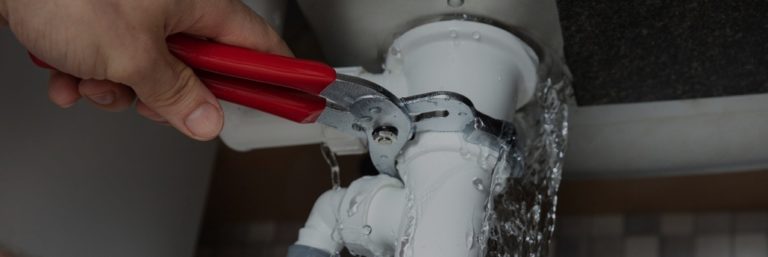How to Examine If Your Residence Has a Surprise Leakage
Check This OutEverybody has got their personal theory when it comes to Locating water leaks.

Early detection of dripping water lines can alleviate a potential calamity. In addition to saving you cash, it will certainly lessen the worry and also irritation. The moment you locate a leak, calling your plumber for fixings is the very best solution. Nevertheless, some tiny water leakages may not show up. If you can not spot it with your naked eyes, below are some hacks that assist.
1. Check Out the Water Meter
Every home has a water meter. Examining it is a surefire manner in which helps you find leakages. For starters, shut off all the water resources. Ensure no person will purge, make use of the faucet, shower, run the cleaning machine or dishwashing machine. From there, most likely to the meter and also watch if it will alter. Given that no one is using it, there must be no movements. That indicates a fast-moving leak if it relocates. Furthermore, if you detect no changes, wait an hour or more and also examine back again. This means you might have a sluggish leakage that might even be below ground.
2. Inspect Water Usage
Analyze your water bills and track your water consumption. As the one paying it, you must notice if there are any type of disparities. If you find sudden changes, despite your consumption being the same, it indicates that you have leakages in your plumbing system. Bear in mind, your water expense should drop under the same array every month. A sudden spike in your expense suggests a fast-moving leak.
A stable increase every month, also with the exact same habits, reveals you have a sluggish leak that's additionally slowly escalating. Call a plumber to extensively inspect your home, particularly if you really feel a cozy area on your flooring with piping underneath.
3. Do a Food Coloring Examination
When it concerns water consumption, 30% originates from toilets. Examination to see if they are running appropriately. Drop flecks of food color in the storage tank and wait 10 mins. There's a leakage between the container and dish if the color somehow infiltrates your dish during that time without flushing.
4. Asses Outside Lines
Don't fail to remember to check your outside water lines also. Test spigots by connecting a yard hose. Must water permeate out of the connection, you have a loosened rubber gasket. Change this and make sure all links are tight. It will assist obtain it professionally examined as well as preserved each year if you've got a sprinkler system. One small leak can lose lots of water and also spike your water bill.
5. Inspect and Analyze the Situation
Home owners need to make it a routine to examine under the sink counters as well as also inside cabinets for any type of bad odor or mold and mildew development. These two warnings indicate a leakage so punctual focus is called for. Doing regular inspections, even bi-annually, can conserve you from a significant issue.
If you recognize your house is already old, maintain a careful eye on your heaters, hoses, pipes etc. Look for discolorations as well as compromising as most pipelines as well as home appliances have a life expectancy. They will certainly additionally normally weaken as a result of deterioration. Do not wait for it to intensify if you suspect leaking water lines in your plumbing system. Call a professional plumber immediately so you do not end up with a terrible mess in your house.
Early detection of dripping water lines can reduce a possible disaster. Some little water leaks might not be noticeable. Inspecting it is a guaranteed means that helps you uncover leaks. One small leakage can squander bunches of water as well as increase your water bill.
If you presume dripping water lines in your plumbing system, don't wait for it to intensify.
WARNING SIGNS OF WATER LEAKAGE BEHIND THE WALL
PERSISTENT MUSTY ODORS
As water slowly drips from a leaky pipe inside the wall, flooring and sheetrock stay damp and develop an odor similar to wet cardboard. It generates a musty smell that can help you find hidden leaks.
MOLD IN UNUSUAL AREAS
Mold usually grows in wet areas like kitchens, baths and laundry rooms. If you spot the stuff on walls or baseboards in other rooms of the house, it’s a good indicator of undetected water leaks.
STAINS THAT GROW
When mold thrives around a leaky pipe, it sometimes takes hold on the inside surface of the affected wall. A growing stain on otherwise clean sheetrock is often your sign of a hidden plumbing problem.
PEELING OR BUBBLING WALLPAPER / PAINT
This clue is easy to miss in rooms that don’t get much use. When you see wallpaper separating along seams or paint bubbling or flaking off the wall, blame sheetrock that stays wet because of an undetected leak.
BUCKLED CEILINGS AND STAINED FLOORS
If ceilings or floors in bathrooms, kitchens or laundry areas develop structural problems, don’t rule out constant damp inside the walls. Wet sheetrock can affect adjacent framing, flooring and ceilings.
https://www.servicemasterbyzaba.com/blog/how-to-detect-water-leakage-in-walls/

I found that article about Top leak detection hacks when doing a search on the internet. Are you aware of somebody else who is occupied with the niche? Why not share it. Thank-you for going through it.